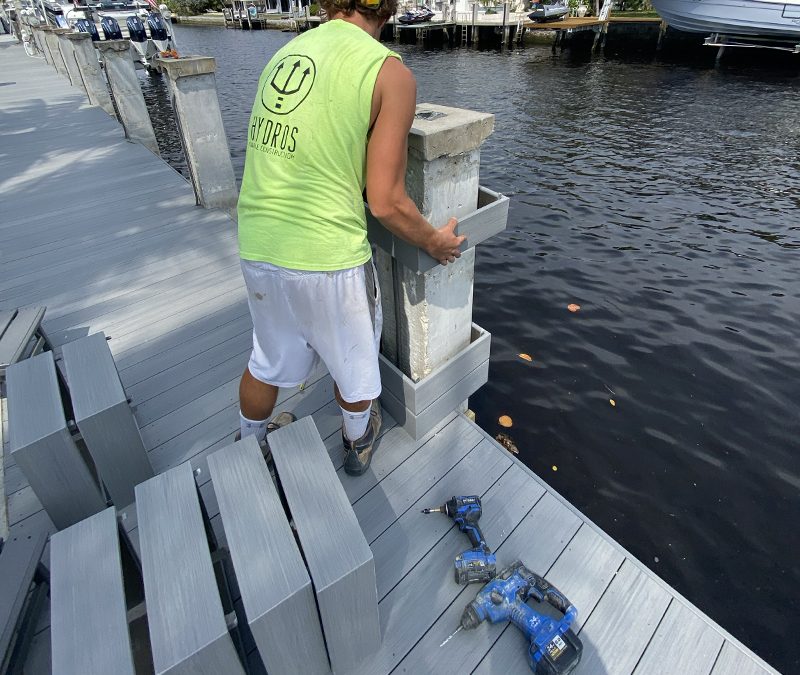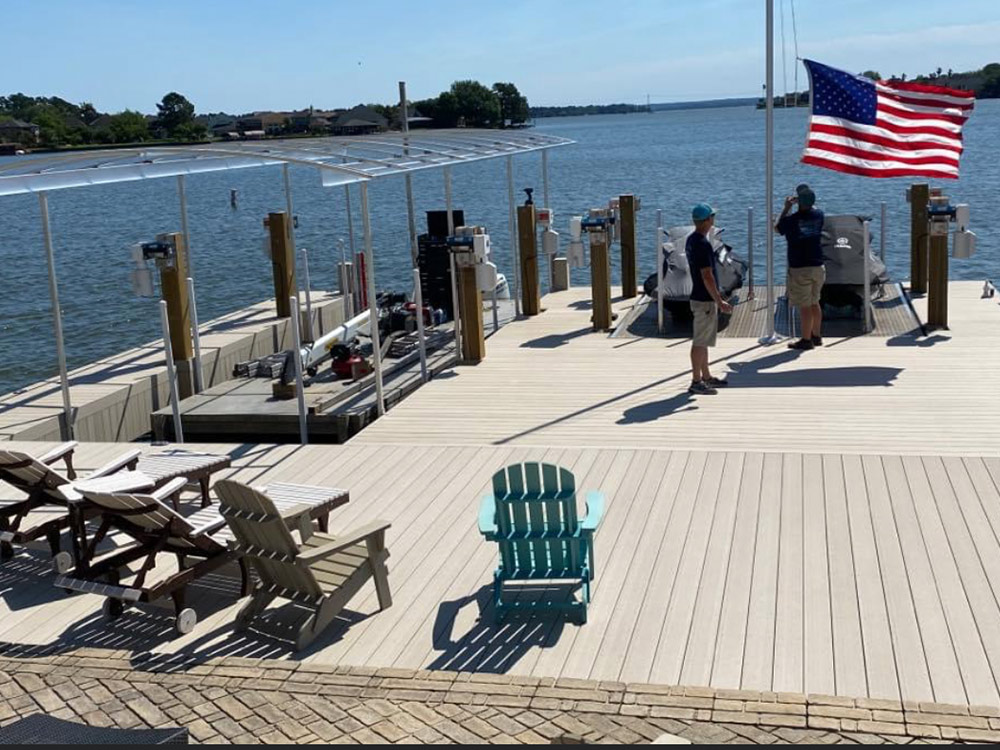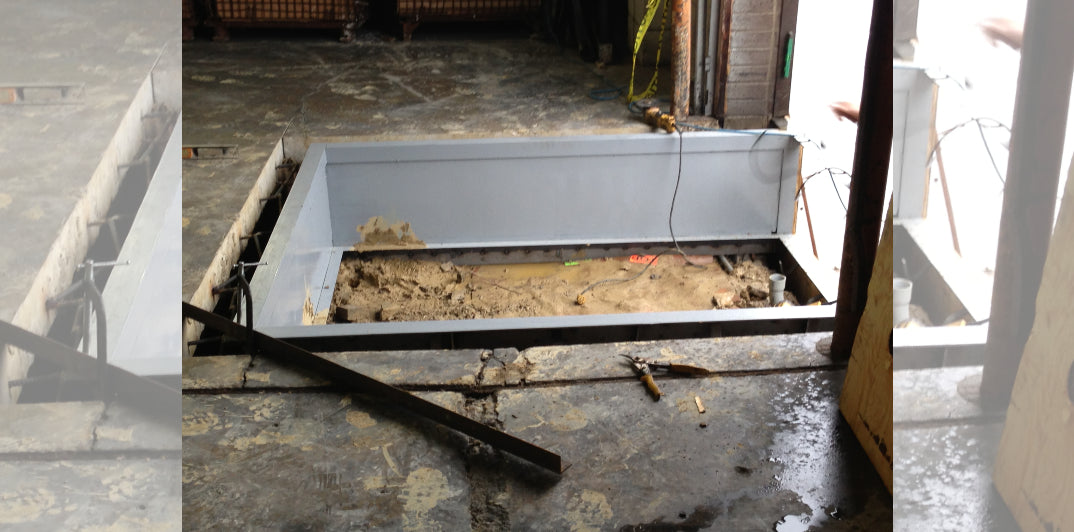Why Regular Maintenance Can Reduce Future Dock Repairs
Why Regular Maintenance Can Reduce Future Dock Repairs
Blog Article
Reliable Dock Fixing Techniques: Ensuring Structural Integrity
Making sure the structural stability of docks via efficient repair service techniques is vital for the longevity and security of marine facilities. Ultimately, choosing the best repair products, such as composite products and corrosion-resistant alloys, is important for durability.
Examining Dock Damages
Evaluating dock damages is a vital initial action in guaranteeing the architectural honesty and safety of any docking center. This first evaluation includes a comprehensive assessment to determine both surprise and noticeable damages. Key facets to analyze include the dock's foundation, pilings, outdoor decking, and equipment. Each part must be scrutinized for indicators of wear, rot, deterioration, or various other forms of degradation that could endanger the structural integrity.
Architectural designers or qualified examiners normally execute these analyses utilizing specialized methods and tools. For instance, undersea inspections could use finder devices or remotely operated automobiles (ROVs) to spot submerged damages. Over water, aesthetic evaluations are complemented by utilizing dampness meters and various other diagnostic devices to discover underlying issues not immediately noticeable to the naked eye.

Finding Repair Materials
Picking the appropriate repair work materials is an essential action in the dock reconstruction process, one that directly influences the durability and performance of the repaired framework. Product option must be driven by elements such as environmental conditions, load-bearing demands, and compatibility with existing dock parts. As an example, wood is a traditional choice for anchors due to its natural resilience and visual allure. Nonetheless, picking the appropriate sort of timber, such as pressure-treated lumber or naturally rot-resistant types like cedar or teak, is vital to hold up against marine settings.
Along with timber, composite materials are significantly prominent as a result of their resilience and reduced maintenance requirements. Compounds, generally made from a mix of plastic and wood fibers, supply exceptional resistance to rot, insects, and UV damage. For steel docks, selecting corrosion-resistant alloys such as galvanized steel or marine-grade aluminum is necessary to avoid corrosion and guarantee architectural integrity in saline water problems.
Epoxy resins and marine-grade sealers are essential for fixing splits and sealing joints, supplying a waterproof barrier and boosting the dock's overall toughness. By meticulously selecting top notch products, dock repair work can accomplish durable results, thus securing versus future degradation and making sure secure, reliable use.
Structural Reinforcement Methods
Reliable architectural reinforcement techniques are vital in making certain the security and longevity of dock repair work. One essential technique includes using steel or composite support bars (rebar) within concrete frameworks. Rebar gives added tensile toughness, preventing cracks and distributing loads much more uniformly. This technique is especially reliable for anchors revealed to hefty loads or severe ecological problems.
An additional necessary method is the application of fiber-reinforced polymers (FRP) These materials use high strength-to-weight proportions and excellent resistance to corrosion, making them optimal for strengthening concrete or wood anchors. FRP can be applied in strips or sheets and bound with epoxy materials to improve structural honesty.
Supporting and anchoring systems likewise play a vital function in structural reinforcement. Cross-bracing, using steel or wooden beam of lights, can neutralize lateral pressures, reducing swaying and movement. Securing systems, such as helical piers or driven piles, give a steady structure by transferring lots to much deeper, a lot more look at these guys stable dirt layers.
Lastly, the assimilation of load-distribution plates can assist disperse weight a lot more evenly across the dock's surface, minimizing localized stress factors. These techniques collectively make certain that docks continue to be durable and safe, with the ability browse around these guys of holding up against the rigors of their functional environment.
Advanced Repair Service Approaches

One more innovative strategy entails undersea welding, which permits repairs to be conducted without the requirement to dewater the area. This technique is specifically beneficial for resolving structural issues in submerged dock elements, making sure marginal disturbance to procedures. Boosted welding strategies, paired with robotic systems, deliver accuracy and integrity, therefore expanding the life-span of the dock.
In addition, cathodic defense systems are applied to prevent corrosion in metallic dock structures. By using sacrificial anodes or amazed existing systems, these strategies properly minimize the electrochemical procedures that result in material deterioration.
Last but not least, progressed tracking technologies, such as structural health monitoring (SHM) systems, supply real-time data on the condition of dock structures. These systems enable proactive upkeep and prompt treatments, eventually ensuring the long-term structural integrity of the dock.
Upkeep and Prevention
Upkeep and prevention are fundamental ideas that underpin the durability and safety of dock frameworks. Routine inspections are vital, enabling for early discovery of deterioration, prospective weaknesses, and ecological impacts. An aggressive method, entailing routine look for corrosion, rot, and architectural shifts, minimizes expensive repairs and lengthens the dock's operational life.
Preventative steps need to include using safety finishes to metal parts to protect versus rust and utilizing cured wood to withstand degeneration. Furthermore, making certain proper drain and air flow can prevent water build-up, which is an usual reason for structural degradation. Integrating high quality products and sticking to producer guidelines throughout building and construction and repair phases likewise play vital duties in enhancing resilience.

Educating employees in dock upkeep finest techniques ensures consistent application of safety nets. Leveraging technical developments, such as drones for evaluations and sensors for real-time surveillance, can better improve upkeep efforts. By prioritizing upkeep and prevention, dock owners can ensure structural honesty, operational security, and affordable administration over the dock's life expectancy.
Verdict
In verdict, maintaining the structural stability of aquatic centers requires extensive dock repair work techniques. Comprehensive assessments making use of advanced tools reveal both visible and hid damages, while the choice of appropriate fixing materials improves resilience. Applying structural support methods addresses anxiety points successfully. Advanced repair methods, paired with regular maintenance techniques, guarantee the dock stays functional and safe under varied ecological conditions. Embracing these approaches considerably extends the life-span and functionality of marine framework.
Guaranteeing the structural stability of anchors via reliable fixing techniques is critical for the durability and safety and security of aquatic centers.Picking the appropriate repair work materials is a pivotal step in the dock restoration process, one that directly affects the long life and performance of the fixed framework.Reliable architectural support strategies are crucial in making sure the security and long life of dock repairs. By prioritizing upkeep and avoidance, dock proprietors can make certain architectural stability, functional security, and economical administration over the dock's life-span.
In verdict, maintaining the architectural stability of aquatic facilities demands comprehensive dock repair service strategies.
Report this page